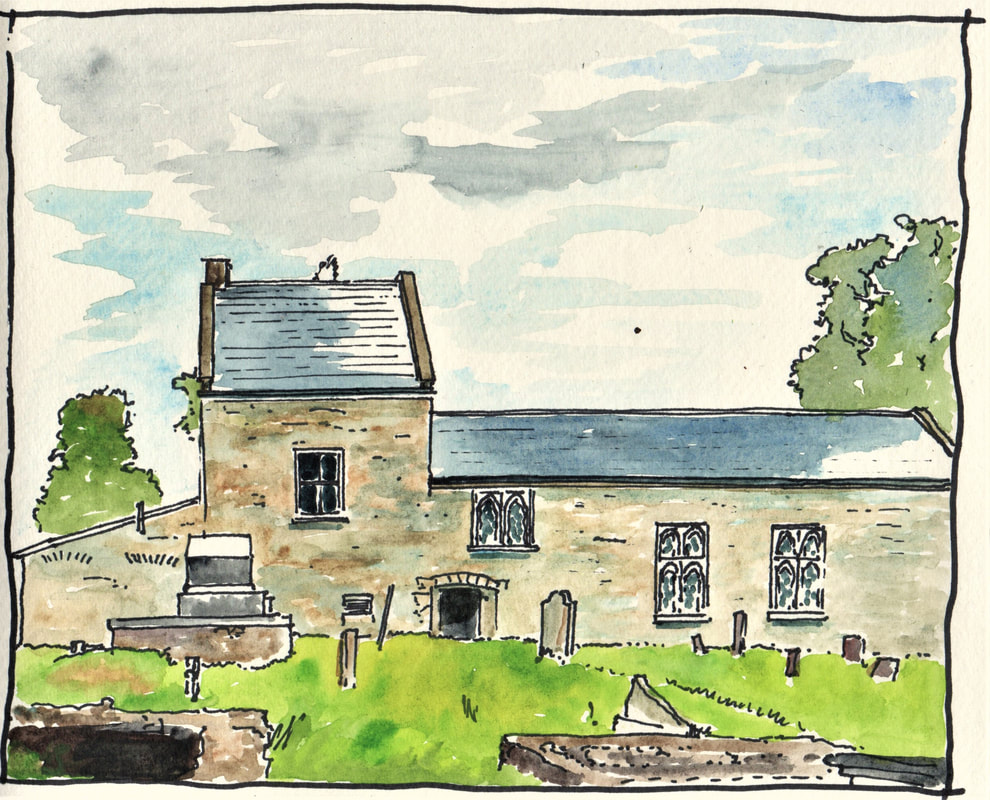Now used as a parochial hall, this largely seventeenth century building was formerly a church and then a cathedral with bishop's house attached. Kilmore means 'great church' and a church has been located here since at least the 6th century. A Norman Motte dating from 1211 is located in an adjacent field perhaps reflecting the importance of this ecclesiastical site in the medieval period. The site became the seat of the bishops of Kilmore from the 15th century and the building was largely rebuilt following the Ulster Plantation of the early seventeenth century. In the graveyard is the tomb of bishop Bidell (I was sitting against this when doing my drawing), who had the Old Testament translated into Gaelic. A new cathedral was built nearby in the 1860's and has a fine Romanesque door built into one side. Today the building is very simple, it has some nice timber lancet windows and a curving plaster vault. In the grounds are some of the ruins of the bishops palace, which was once much larger. It is a fascinating site and well worth a visit.


 RSS Feed
RSS Feed
